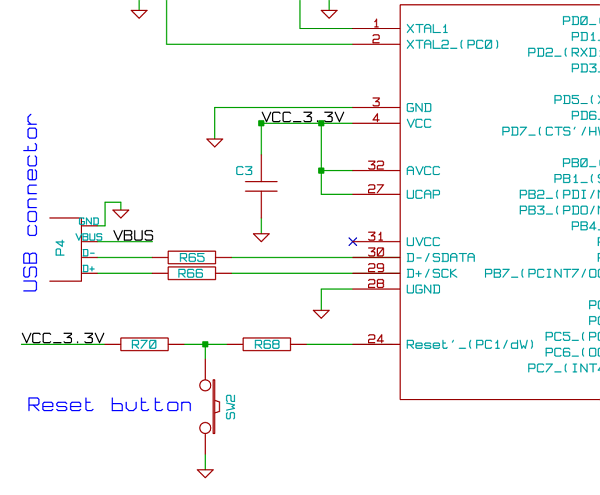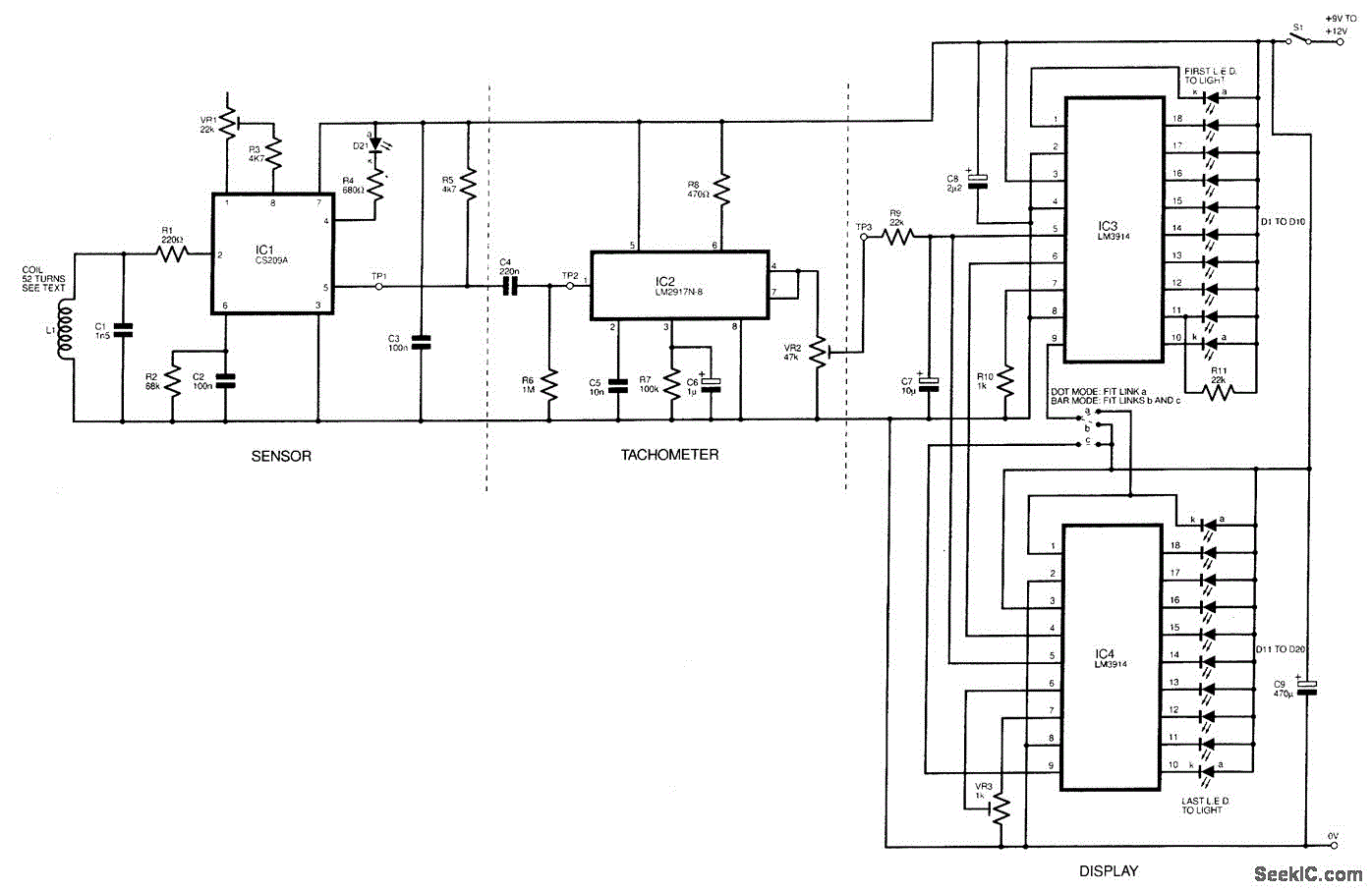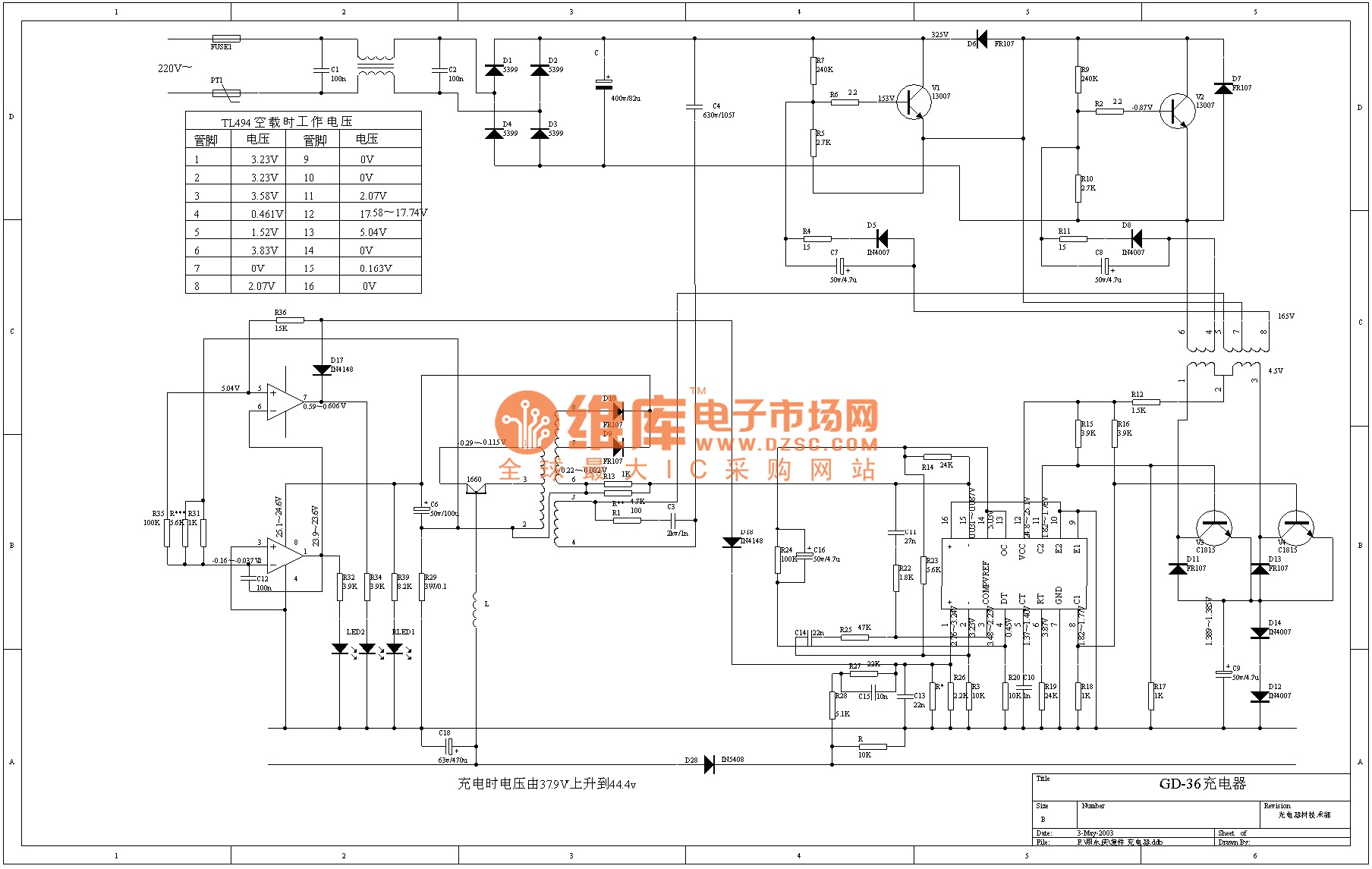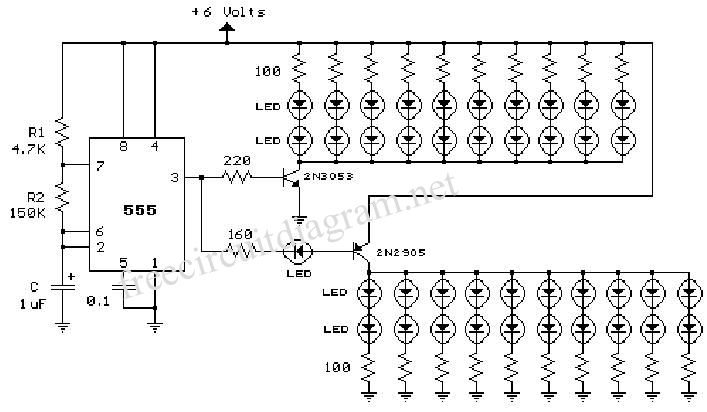
Bicycle Speedometer With Hub Dynamo

The concept for this circuit was developed due to issues experienced with a bicycle's wireless speedometer. This device comprises two components: the cycle computer and a transmitter mounted on the front fork. A small magnet is affixed to the spokes, enabling the transmitter to emit a pulse with each wheel revolution, provided that the installation is correct. The transmitter's range is limited to approximately 75 cm, and performance diminishes as the battery voltage decreases. The following circuit addresses these challenges. A Shimano NX-30 hub dynamo features 28 poles, generating 14 complete cycles of a 6 V alternating voltage per revolution when loaded with a lamp; the voltage increases significantly under no load. Capacitors C1 and C2, along with diodes D1 and D2, are utilized to double the AC output voltage. Voltage regulator IC2 maintains the transmitter and divider IC voltage at a safe 12 V, equivalent to the original battery voltage. The divider chip (IC1) reduces the frequency of the dynamo signal by a factor of 14, producing a single pulse for each wheel revolution. This pulse is introduced into the circuit at the location of the original reed contact. The circuit is housed within the front light, which provides adequate space and already has a connection from the dynamo. This configuration also minimizes the distance to the cycle computer. For those looking to reduce component count, the author's prototype used a counter that divided by 16, adjusting the wheel size setting to 16/14 of the actual size during the cycle computer setup. Consequently, diodes D4, D5, and D8 can be omitted.
The circuit described is an innovative solution for overcoming the limitations of traditional wireless speedometers in bicycles. The integration of a Shimano NX-30 hub dynamo ensures a reliable power source, converting mechanical energy into electrical energy efficiently. The use of capacitors C1 and C2, along with diodes D1 and D2, is crucial for voltage doubling, allowing the circuit to maintain adequate power levels even when the dynamo is under load.
The voltage regulator IC2 plays a vital role in stabilizing the circuit's output, ensuring that both the transmitter and the divider IC operate within safe voltage limits. This is particularly important as fluctuations in battery voltage can lead to erratic performance or complete failure of the speedometer. The frequency divider IC1 is essential for translating the dynamo's output into usable pulses for the speedometer, ensuring that each pulse corresponds accurately to a single wheel revolution.
By housing the circuit within the front light, the design not only conserves space but also simplifies wiring and reduces potential signal loss due to distance. The option to adjust the wheel size setting in the cycle computer setup demonstrates flexibility in design, allowing users to tailor the system to their specific needs while minimizing component usage. This thoughtful approach to circuit design enhances the reliability and functionality of the bicycle speedometer, providing cyclists with accurate and consistent speed readings.The idea for this circuit came when the author had problems with the wireless speedometer on his bicycle. Such a device consists of two parts: the cycle computer itself and a transmitter that is mounted on the front fork.
A small magnet is attached to the spokes so that the transmitter sends out a pulse for every revolution of the wheel (as long a s everything has been fitted properly). Since the range of the transmitter is limited (about 75 cm), you`ll be lucky if it works straight away. And when the voltage of the battery starts to drop you can forget it. The following circuit gets round these problems. A Shimano NX-30 hub dynamo has 28 poles. This results in 14 complete periods of a 6 V alternating voltage per revolution (when loaded by a lamp; under no load the voltage is much higher).
C1, C2, D1 and D2 double the voltage of the AC output. Regulator IC2 keeps the voltage to the transmitter and the divider IC at a safe level (12 V, the same as the original battery). The divider chip (IC1) divides the frequency of the signal from the dynamo by 14, so that a single pulse goes to the transmitter for every revolution of the wheel.
This pulse enters the circuit at the point where the reed contact was originally. The circuit is built inside the front light, since it has enough room and a cable from the dynamo is already present. The distance to the cycle computer is smaller as well in that case. The following tip can be used if you want to save yourself a few components. In the author`s prototype the counter divided by 16 and the setting for the size of the wheel was adjusted to 16/14th of the real size in the setup of the cycle computer.
In that case you can leave out D4, D5 and D8. 🔗 External reference
The circuit described is an innovative solution for overcoming the limitations of traditional wireless speedometers in bicycles. The integration of a Shimano NX-30 hub dynamo ensures a reliable power source, converting mechanical energy into electrical energy efficiently. The use of capacitors C1 and C2, along with diodes D1 and D2, is crucial for voltage doubling, allowing the circuit to maintain adequate power levels even when the dynamo is under load.
The voltage regulator IC2 plays a vital role in stabilizing the circuit's output, ensuring that both the transmitter and the divider IC operate within safe voltage limits. This is particularly important as fluctuations in battery voltage can lead to erratic performance or complete failure of the speedometer. The frequency divider IC1 is essential for translating the dynamo's output into usable pulses for the speedometer, ensuring that each pulse corresponds accurately to a single wheel revolution.
By housing the circuit within the front light, the design not only conserves space but also simplifies wiring and reduces potential signal loss due to distance. The option to adjust the wheel size setting in the cycle computer setup demonstrates flexibility in design, allowing users to tailor the system to their specific needs while minimizing component usage. This thoughtful approach to circuit design enhances the reliability and functionality of the bicycle speedometer, providing cyclists with accurate and consistent speed readings.The idea for this circuit came when the author had problems with the wireless speedometer on his bicycle. Such a device consists of two parts: the cycle computer itself and a transmitter that is mounted on the front fork.
A small magnet is attached to the spokes so that the transmitter sends out a pulse for every revolution of the wheel (as long a s everything has been fitted properly). Since the range of the transmitter is limited (about 75 cm), you`ll be lucky if it works straight away. And when the voltage of the battery starts to drop you can forget it. The following circuit gets round these problems. A Shimano NX-30 hub dynamo has 28 poles. This results in 14 complete periods of a 6 V alternating voltage per revolution (when loaded by a lamp; under no load the voltage is much higher).
C1, C2, D1 and D2 double the voltage of the AC output. Regulator IC2 keeps the voltage to the transmitter and the divider IC at a safe level (12 V, the same as the original battery). The divider chip (IC1) divides the frequency of the signal from the dynamo by 14, so that a single pulse goes to the transmitter for every revolution of the wheel.
This pulse enters the circuit at the point where the reed contact was originally. The circuit is built inside the front light, since it has enough room and a cable from the dynamo is already present. The distance to the cycle computer is smaller as well in that case. The following tip can be used if you want to save yourself a few components. In the author`s prototype the counter divided by 16 and the setting for the size of the wheel was adjusted to 16/14th of the real size in the setup of the cycle computer.
In that case you can leave out D4, D5 and D8. 🔗 External reference





